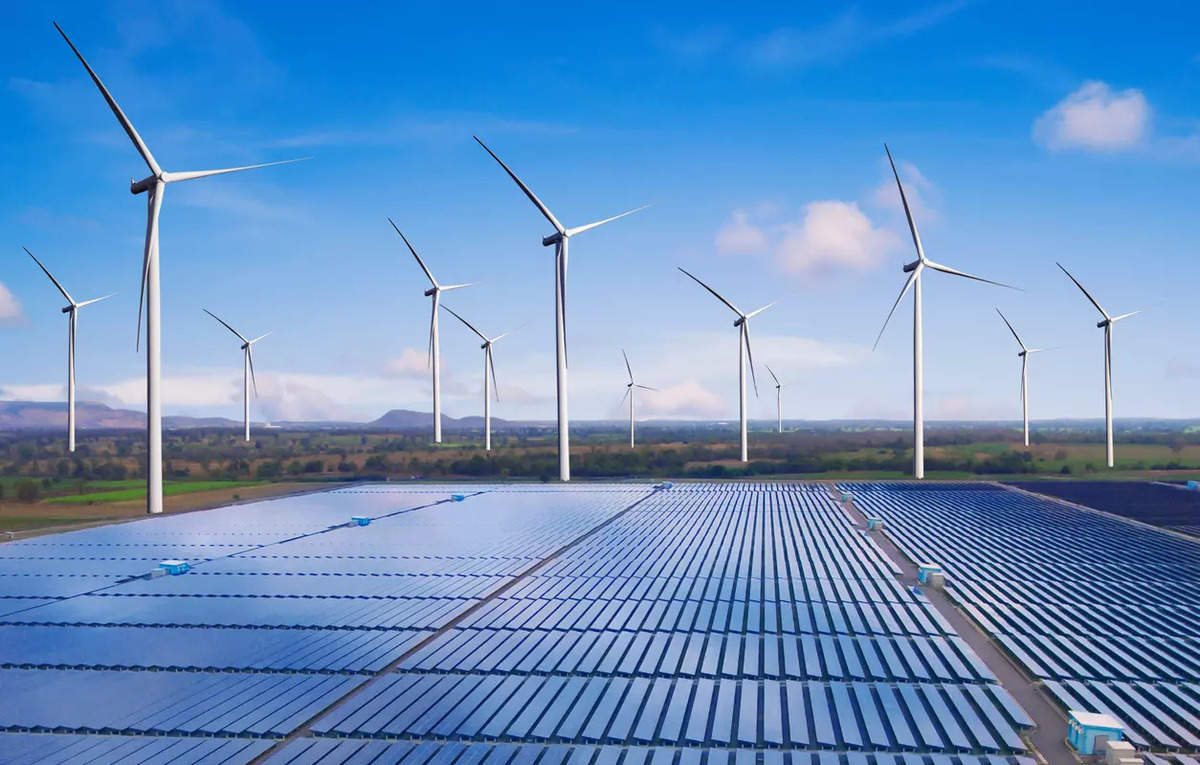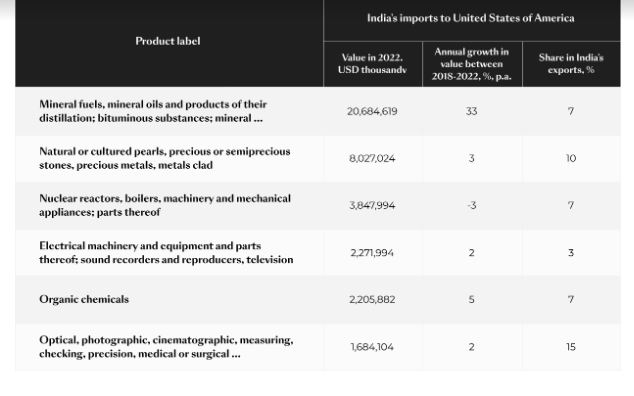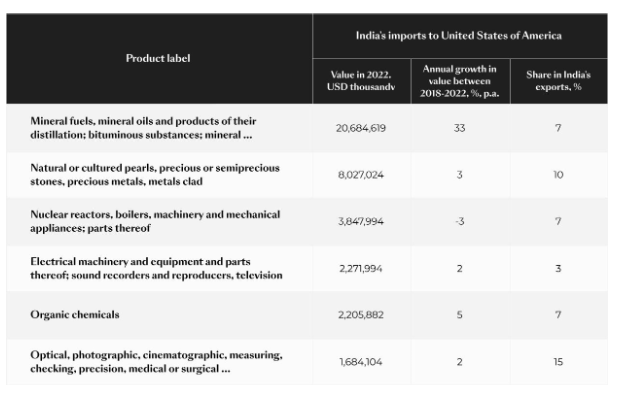Infra
U.S.-India Trade Relations, Energy Sector Cooperation, and Sustainable Development Prospects – ET Infra

The global energy sector is experiencing a steady increase in import activity, particularly since the COVID-19 pandemic. This trend coincides with a growing focus on achieving the United Nations’39; Sustainable Development
Goals (SDGs), which encompass objectives such as good health, clean water, affordable and clean energy, and advancements in industry and infrastructure.
Reliable supply chains and access to advanced technologies are crucial to meeting these challenges.
The Atlantic Project Cargo team prepared an overview of the trade relations between the Republic of India and the United States for World Trade Month.
Additionally, we had a look at the energy sector, relations, and opportunities for U.S. companies.
General overview of the USA-India trade relations
The trade relationship between India and the United States is significant and growing. While there’s a trade deficit for the US, overall, it’s a strong economic partnership.
Overall Trade
In 2022, the total trade between the United States and India in goods and services reached an estimated $191.8 billion. The U.S. had a trade deficit with India, meaning it imported more than it exported.
1. Exports – $73.0 billion (2.3% of overall U.S. exports)
2. Imports – $118.8 billion
3. Trade deficit – $45.7 billion
Both exports and imports increased significantly from 2021:
1. U.S. exports to India – up 17.9% ($7.2 billion)
2. U.S. imports from India – up 16.7% ($12.2 billion)
This growth trend continued from 2012 as well, with exports and imports more than doubling in that timeframe.
Top 10 Imports from the US to India
In the US export dynamics, there is a significant annual growth in the import of petroleum oils (46% p.a.), and petroleum gas (45% p.a.) to India. Total growth in imports of “Mineral fuels and mineral oils and products of their distillation…” is 33% per annum from 2018 to 2022.
Additionally, “Turbojets, turbopropellers, and other gas turbines” still have a 33% share in “Nuclear reactors, boilers, machinery, and mechanical appliances…”, however, there has been a 3% drop in recent years in the category.
Atlantic Project Cargo specializes in imports and exports of overweight and out-of-gauge cargo, such as turboproppelers and gas turbines, and can assist with all the stages of shipping these items.

Source: Trade Map
Top 10 Exports from India to the US
There is significant growth in exports of “Electrical machinery and equipment…” especially “Telephone sets, smartphones, and cellphones” from 2018 to 2022. Diamonds and jewelry play a significant part in “Natural or
cultured pearls, precious or semi-precious stones, precious metals…”.
Additionally, “Pharmaceutical products” still have a strong position in Indian exports to the US with 6% per annum.
The US and India are working on initiatives like the Indo-Pacific Economic Framework for Prosperity (IPEF) to further strengthen economic ties. This framework aims to create a more integrated region with fairer trade practices.
Trade Issues
Despite the strong relationship, there are some trade issues between the US and India. These include:
● Both countries have imposed tariffs and other barriers that limit market access for some goods.
● The US has concerns about India’s intellectual property protection regime.
● Both countries are working to address these issues and continue to strengthen their economic partnership.
US and India Cooperation in the Energy Sector
The United States and India, two of the world’s largest economies, are forging a strong collaborative effort in the energy sector. This partnership goes beyond simple trade and focuses on accelerating clean energy solutions to address climate change and fuel sustainable growth.
A History of Collaboration
The U.S.-India energy partnership boasts a long track record of success. It began in 2000 with the U.S.-India Bilateral Project for Energy Conservation and Commercialization (ECO). This initiative played a key role in establishing
India’s Bureau of Energy Efficiency (BEE), a central agency driving energy conservation efforts in the country.
This early collaboration set the stage for the launch of the Partnership to Advance Clean Energy (PACE) in 2009. PACE serves as a cornerstone of the US-India energy partnership, fostering research, development, and
deployment of clean energy technologies.
Opportunities for the U.S. Companies in the Indian Energy Sector
India’s energy sector is undergoing a significant transformation. The country aims to achieve an ambitious target of 500 GW of renewable energy capacity by 2030. This ambitious goal necessitates significant investments in grid
modernization, smart technologies, and clean energy generation equipment. U.S. companies are well-positioned to capitalize on this opportunity. The U.S. is a global leader in power sector technologies, offering a wide range of
cutting-edge solutions:
● Renewable Energy Technologies
U.S. exports of wind turbines and related components are experiencing
a boom.
● Energy Efficiency Technologies
U.S. companies are at the forefront of developing smart meters, energy- efficient transformers, and other technologies that can help India reduce transmission and distribution losses.
● Grid Modernization Equipment
The Indian government is prioritizing grid modernization to improve reliability and integrate renewable energy sources effectively. U.S. exports of advanced transmission lines, control systems, and substation
equipment can play a crucial role in this process.
Numbers
The trade data underscores the growing importance of the U.S.-India power sector partnership. U.S.-India bilateral energy commodities and equipment trade reached $18.5 billion in 2022 from $14 billion in 2021. This represents a
significant increase of 22% from 2021, highlighting the growing demand for U.S. technologies.
Atlantic Project Cargo’s Role in Energy Security and Sustainable Development
Their expertise in handling oversized cargo aligns perfectly with the needs of the power sector. They can manage the transportation of crucial equipment like wind turbines, gas turbines, and transformers. This ensures these components reach their destinations safely and efficiently, minimizing delays in power plant construction and project completion.
Atlantic Project Cargo can facilitate a smooth and efficient supply chain for clean energy projects, the pharmaceutical sector, and infrastructural & industrial projects. They can handle all stages of shipping, including customs clearance, permits, and specialized transportation. This reduces logistical burdens for companies involved in these projects, allowing them to focus on development and deployment.
By supporting the movement of clean energy technology, Atlantic Project Cargo indirectly contributes to:
● Reduced Reliance on Fossil Fuels
As India transitions to clean energy sources, the need for fossil fuels will decrease. This promotes energy security by reducing dependence on volatile oil markets.
● Sustainable Development
Clean energy production reduces greenhouse gas emissions and air pollution, contributing to a healthier environment and a more sustainable future.
● Economic Growth
The development of the renewable energy sector creates new jobs and economic opportunities for both the US and India.
Conclusion
The analysis of trade data between the US and India reveals a flourishing economic partnership, particularly within the power sector. The growing demand for clean energy solutions in India presents a significant opportunity for US companies pioneering renewable energy technologies, energy efficiency solutions, and grid modernization equipment. Atlantic Project Cargo plays a vital role in facilitating this clean energy transition by ensuring the safe and efficient transportation of oversized cargo like wind turbines and transformers.











